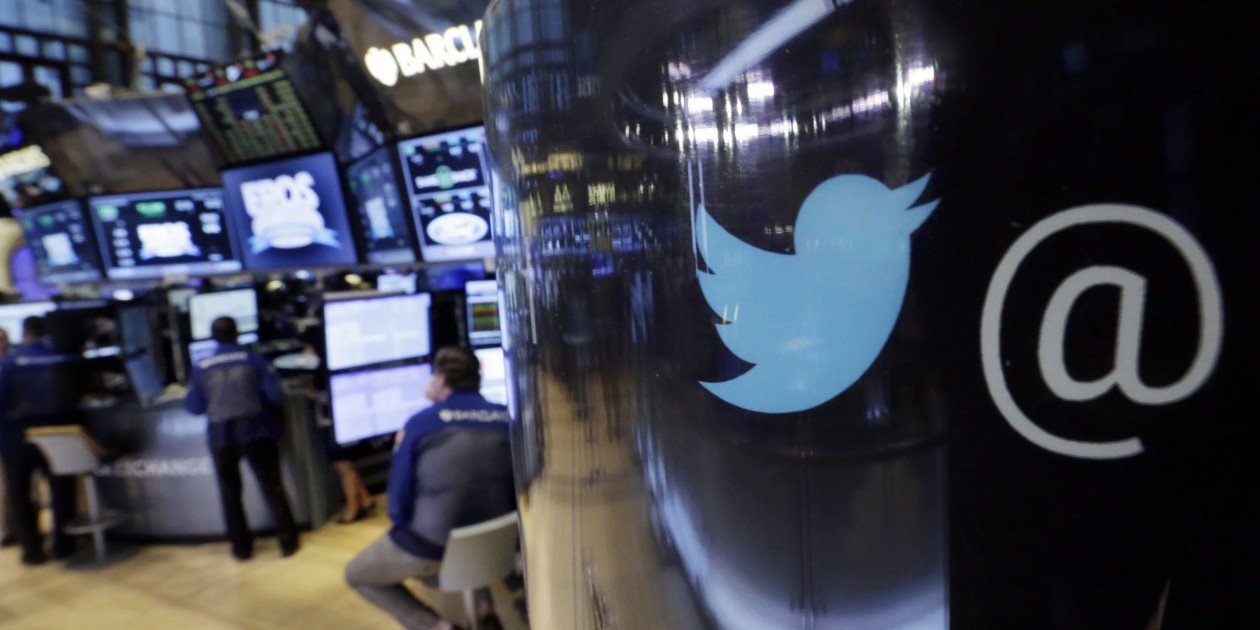Twitter set out to build a virtual town square bustling with billions of people. But, it’s starting to look more like a novelty stand as the masses flock to other services that strike a more personal chord.
The San Francisco company showed no user growth at all in a fourth-quarter report released Thursday, the clearest signal yet that the one-time trendsetter is struggling to remain relevant. That leaves it with 320 million monthly users — roughly one-fifth the size of Facebook.
CEO Jack Dorsey is working hard to reconfigure the decade-old service. That’s trickier than it sounds, since he also needs to avoid alienating a core of devoted users who depend on it to tweet their thoughts and track issues that matter to them.
Dorsey took a step in that direction Wednesday, announcing plans to tweak Twitter’s timeline to highlight tweets that appeal the most to each user, instead of only presenting them in reverse chronological order. He also hinted that Twitter may lift its long-standing 140-character limit on the length of each tweet.
“We have some really weird rules … that just nobody understands,” Dorsey told analysts on a conference call, mentioning Twitter’s arcane punctuation requirements for replying to messages. “We need to fix things.”
Dorsey added he expected the new timeline formula would attract more users. “It does improve the experience fundamentally,” he said.
Flatlining user growth also suggests Twitter’s previous effort to make the service more accessible — Moments, a tool that compiles tweets about major events in a graphic, online magazine style — hasn’t done much to get people excited since its October debut.
By one measure, Twitter’s user numbers actually declined in the fourth quarter. Excluding people who only receive Twitter alerts as text messages, the company said its monthly active users dropped from 307 million in the third quarter to 305 million in the fourth quarter.
Dorsey, however, said those numbers “bounced back” to third-quarter levels in January. Chief financial officer Anthony Noto said the company was seeing more new users as well as “resurrected” users who had previously enrolled and went inactive for a time.
Twitter lost another $90 million during the final three months of last year, preserving its profitless history. Revenue rose 48% from the previous year to $710 million, providing some measure of hope that the service can still be turned into a viable business.
That lacklustre performance hammered Twitter’s stock, now down more than 50% since Dorsey returned as CEO last summer. The shares shed another 52 cents, or 3.5 per cent, to $14.46 in extended trading after the fourth-quarter numbers came out.
Perceptions of Twitter are souring on both Main Street and Wall Street, according to Marcus Messner, an associate journalism professor and social media specialist at Virginia Commonwealth University.
“Twitter is looking kind of old now that there are younger, sexier platforms out there,” Messner said. “When you think of Twitter, it is not where you want to be if you want to be an innovative user of social media.”
Instead, people — especially teenagers — are gravitating to Snapchat and Facebook-owned Instagram and WhatsApp.
Even Facebook, two years older than Twitter and seen as an old-fogey hangout by teens and young adults, continues to attract far more new users — and keeps people coming back to find out what’s going on with their friends and family.
WhatsApp now has more than 1 billion monthly users while Instagram has more than 400 million, including 100 million added during the first nine months of last year. Snapchat, another photo- and video-sharing service, has about 100 million daily users. Twitter, meanwhile, added 28 million users during all of 2015.
Twitter’s biggest problem stems from its inability to make most of its users feel personally connected to what’s being shared on the service, according to Gartner analyst Jennifer Polk. “It’s really a very shallow, superficial interaction on Twitter,” she said.
In contrast, users on Facebook, Instagram and Snapchat are regularly interacting with people they care about. That makes them more likely to share information about themselves, which in turn can help those services sell targeted ads designed to pique an individual’s interest.
Polk thinks Twitter has to act fast to avoid a vicious downward spiral: “If Twitter keeps falling further behind in this race, they are going to lose engagement with their existing users, and then they are going to lose insights into those people and they are going to lose advertisers, too.”











